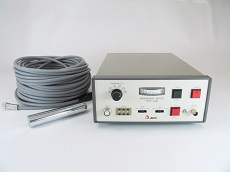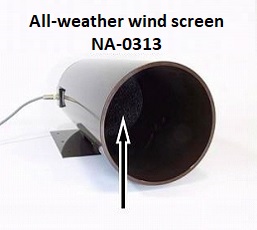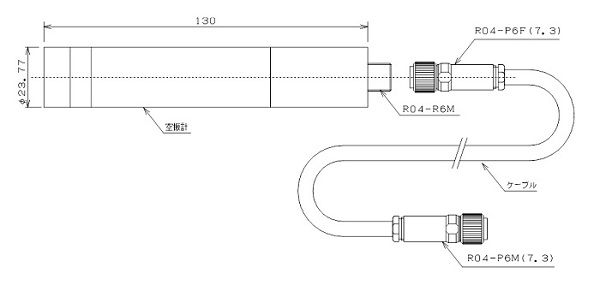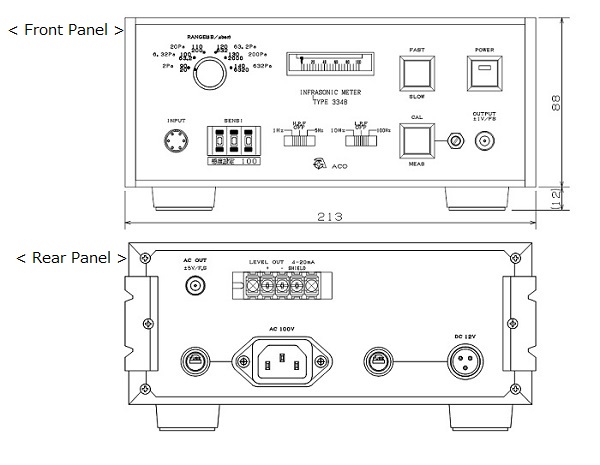PRODUCTS
- Acoustic related products
INFRASONIC METER
TYPE 7144/3348
- JPY 760,000
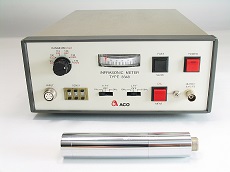
■History of volcano observation using infrasonic meter
For the purpose of observing explosive infrasonic wave, an “Infrasonic Meter” having frequency characteristics suitable for it was developed and Kyoto University’s Sakurajima Volcano Observatory (currently the Volcanic Activity Research Center) started the observation in December 1982. Then the Japan Meteorological Agency (Kagoshima Local Meteorological Observatory) followed by starting observations in March 1983.
As the observation of infrasonic wave using the infrasonic meter has achieved significant results in predicting and judging volcano eruption or analyzing volcanic vibration, after that infrasonic meters were installed in the vicinity of other volcanos in Japan than Sakurajima during eruption activities.
For instance, observations by Hokkaido University during the eruption of Mt. Tokachi in 1988 – 1989, or Kyoto University’s observations for Suwanosejima island after 1989, and observations by the Japan Meteorological Agency during the eruption of Mt Unzen in 1990 – 1995, installation and familiarization of the infrasonic meter has spread rapidly.
Currently, infrasonic wave observations (observations of infrasonic wave using infrasonic meter) are carried out in various volcano observations (constant observation / mobile observation) by the Japan Meteorological Agency. Essentially, infrasonic wave observation is to observe the vibrations of air caused by eruptions therefore it is possible to detect the occurrence of the eruption and its scale from the record of infrasonic wave even when the conditions of the volcano cannot be monitored by telescopic camera due to bad weather, etc. From 2000 to 2001, the Japan Meteorological Agency installed GPS and infrasonic meters for every volcanos in Japan that are subject for constant observations. By maintaining facilities of seismometers and infrasonic meter near the volcanos and sending observation data to the volcano monitoring / information center on real-time basis, and monitoring the status of occurrence of volcanic earthquakes, volcanic tremors or infrasonic waves, accurate evaluations of volcanic activities is realized by infrasonic meter.
■About infrasonic meter
The infrasonic meter, which was developed by ACO Co., Ltd. in collaboration with university is, as mentioned above, now an indispensable instrument for the observations of volcanos in Japan. The infrasonic meter Type 7144 / 3348 is an ultra-low frequency sound pressure level meter that is to measure the vibration in the air caused by the explosive eruption of volcano.
It is possible to measure ultra-low frequency sound pressure with the range of ± 0.02 Pa ~ ± 632 Pa and 0.1 Hz ~ 100 Hz frequency range. Low input impedance for the preamplifier is enabled by utilizing ceramic for the sensor and environmental compatibility that can withstand a long –term outdoor usage is realized.
■Principle of infrasonic meter
Infrasonic wave is a shocking vibration in the air that propagates as a sound wave resulted from a sudden change in the atmospheric pressure near the crater caused by the explosive eruption of the volcano. Since it is a low frequency sound, it is difficult for human ear to hear it directly and when the infrasonic wave passes through, it may shake the windows and walls of the building and may cause damages such as shattered window glasses.
Up to now the main purpose of the infrasonic mater was observations of volcano eruption but it is possible to use for other applications. Please feel free to contact ACO Co., Ltd. for the detail of the infrasonic meter.
| Frequency range | 0.1~100Hz |
| Sensitivity (including preamplifier) | 2.5V/hPa(2.5V/mbar) |
| Dynamic range | 0.06Pa~632Pa(70~150dB SPL) |
| Sensing device | Ceramic type |
| Level Range | Charge converter |
| Outline and dimensions | See outline DWG. |
| Input | Number of channels : 1 channel Terminal : 6P connector (Tajimi R03-R6F) A;+15V B;-15V C;SIG E,F;GND |
| Output | Terminal : BNC connector Voltage : +/-1V full-scale (front panel), +/-5V full-scale (rear panel) |
| Noise level | Output conversion 8mVrms max. |
| Indicator | Edgewise type 0~100 %, 20 equal division scale, class 2.5 |
| Full-scale range | 2Pa~632Pa(20~6320μbar) |
| Accuracy | 100Hz, +/-1.5 % max. for whole range. (Indicator is +/-3% max.) |
| Gain stability | 1 % max. (output terminal) |
| Linearity | 1 % max. (output terminal) |
| Harmonic distortion | 1% |
| Frequency response | 0.1Hz~100Hz, +/-3dB (when the filter is OFF) |
| Hi-pass filter | Cutoff frequency 1 Hz, 5 Hz, Attenuation characteristic -12dB/oct |
| Low-pass filter | Cutoff frequency 10Hz, 100Hz, Attenuation characteristic 12dB/oct |
| Circuit insulation | Insulation resistance between the signal line and AC line is 10MΩ min. |
| Warm-up time | 0.1Hz~100Hz, 5 minutes |
| Power source | AC100V+/-10% 50/60Hz、DC12V+/-10% |
| Power consumption | DC2W(100mA) max. |
| Dimensions / weight | 288mm(W)×88mm(H)×280mm(D), Approx. 3kg |
| Outline | See outline DWG. |
| Operating temperature | 20℃~50℃ |
| Operating humidity | 90% max. (without condensation) |

